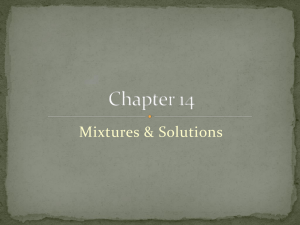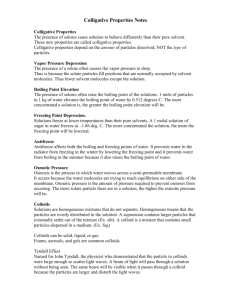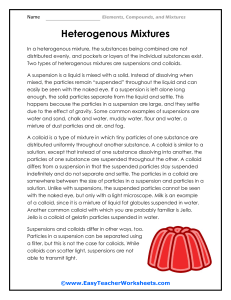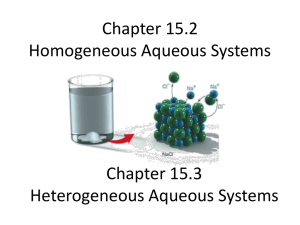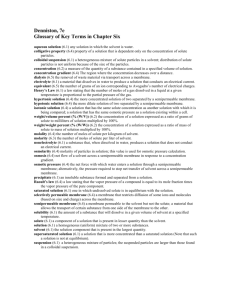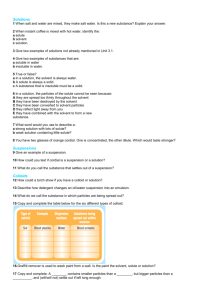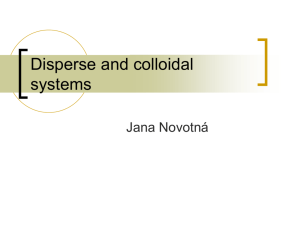Osmosis and Colloids
advertisement
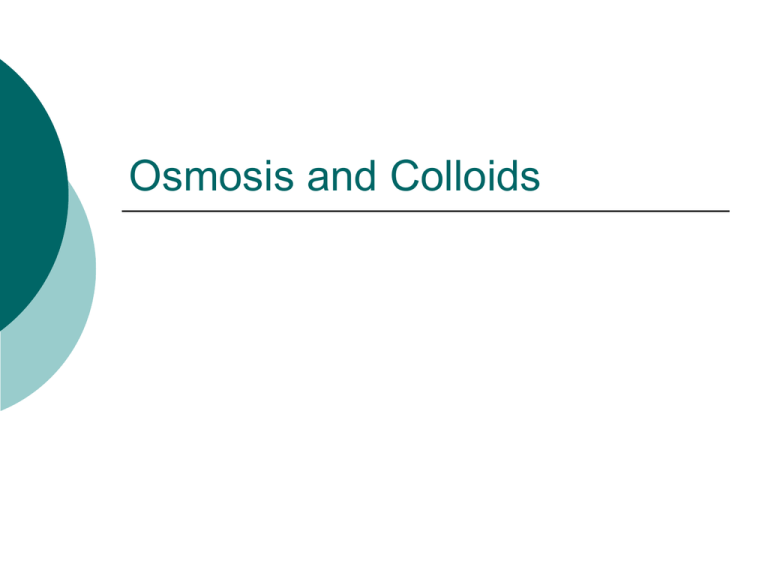
Osmosis and Colloids Osmotic Pressure Another colligative property A solution and a pure solvent are separated by a semipermeable membrane - membrane allows solvent but not solute to pass through As time passes, the volume of the solution increases while the volume of the solvent decreases - stops when equilibrium is reached Flow of solvent through the semipermeable membrane is called osmosis Since the liquid levels are different at equilibrium, there is a different fluid pressure The excess pressure on the solution is called osmotic pressure The greater the concentration of the solution the greater the osmotic pressure Reverse Osmosis Colloids Small particles can be suspended, without dissolving, in a liquid – don’t settle to the bottom Can detect these particles by shining an beam of light through the suspension If the beam is visible from the side, then there are suspended particles scattering light Called the Tyndall Effect Suspension of tiny particles is called a colloid Suspended particles range in size from 1 to 1000nm They are classified according to the states of the dispersed phase and the dispersing medium Pg. 550 If heat or an electrolyte is added to a colloid, particles may clump together (called coagulation) and fall to the bottom




